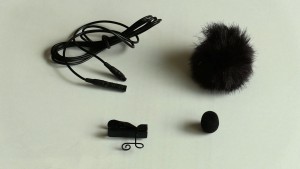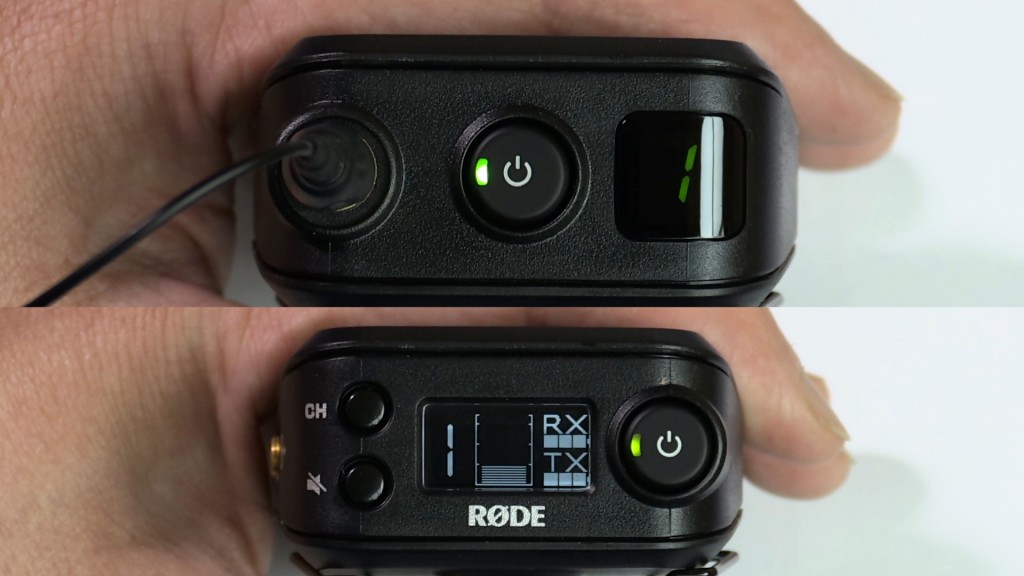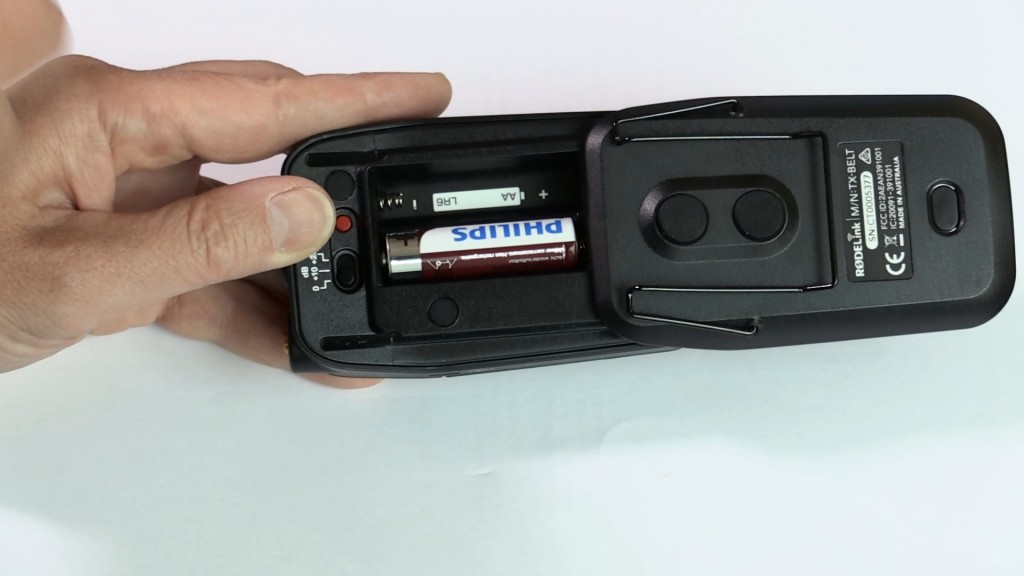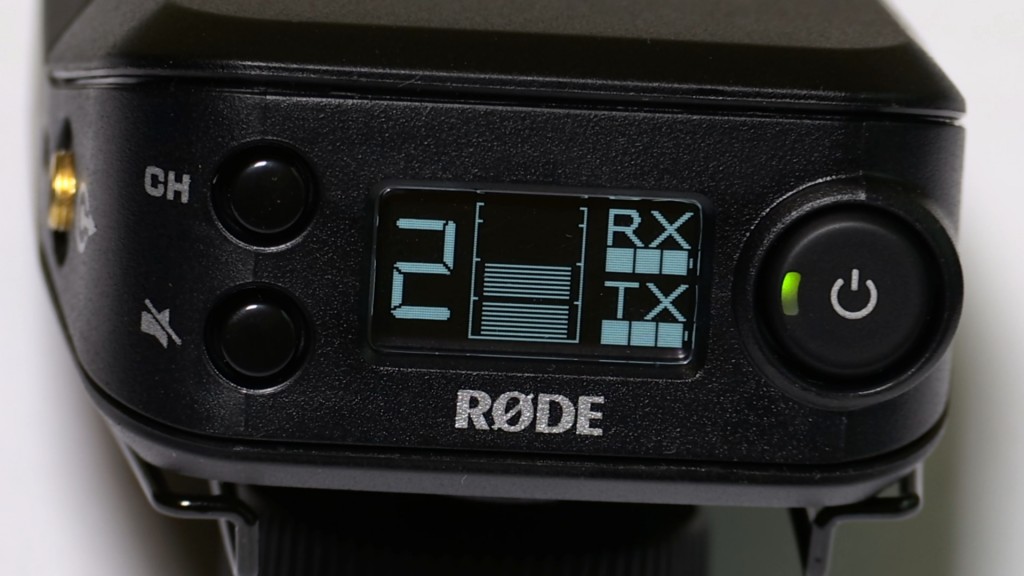Video Review: RODELink wireless mic kit
The RodeLink wireless microphone transmitter and receiver kit has two parts, the beltpack transmitter unit, and a receiver – both around the size of a pack of cigarettes. Both are made of plastic and though they feel reasonably substantial, you’d probably want to take care of them.
Also included are a small lavalier microphone with tie clip; foam windshield and furry windjammer; and there’s one of Rode’s MICON connectors to plug the mic lead into the 3.5mm socket on the transmitter.

Connection from the receiver to the camcorder is by unbalanced 3.5mm jacks, though the lead is so short it’s unlikely to pick up much electrical intereference unless you’re unlucky.
The reciver has a cold shoe mount screwed in underneath so that it easily can be put onto a camcorder or DSLR
And finally there’s a little pouch to keep the mic in, though it’s a shame that the excellent waterproof, dropproof and quite probably bomb-proof little box you get if you buy a Rode Lavalier standalone, isn’t included.
The units open by pushing a button on the back and sliding it away from you. This feels bizarrely as if it’s the wrong way but we’ll live with it. Power comes from 2 AA cells in each unit.
Switching on is by holding the button down for a couple of seconds. A channel number is given, which needs to match on receiver and transmitter at which point the two will sync up and you’re ready to go, with a rough guide to the audio levels shown on the receiver’s screen; this dims after a few seconds to save power.

Eight channels are available and the units are paired from the factory so all you have to do is select the same channel on transmitter and receiver and click the red button to make them sync up.
Input gain on the transmitter can be boosted by none, 10 or 20 dB; take it too high and the green LED on the top button will show red indicating overload, though in our tests it did once distort even though it didn’t flicker red, so test in advance if possible.
The receiver likewise has a gain reduction if needed, in its output to the camcorder. By giving the transmitter as much boost as possible without distorting, and the receiver as little reduction as you can, you should get clean high levels into your recorder.
There’s a mute button on the receiver indicated by the buttons both turning red, so the interviewee can be left unheard while they take a natural break; equally the transmitter wearer can mute themselves by a brief press and hold on the button.
So, what is the system like in use? There are two issues to consider in any radio mic system: 1, what does it sound like? And 2, over what distance can it reliably transmit and receive.
The first question breaks down into two further elements: what does the microphone itself sound like? And how does the transmission and reception process affect that sound, if at all. Our video (above) demonstrates the tests we’re about to describe.

To start with then, we got a baseline by comparing the supplied Rode Lavalier mic with an industry standard Sony ECM77. This is not to pitch them against each other per se, just to get an idea of the Rode’s quality against a known benchmark.
The Rode, we would say, is perfectly pleasant and like their other mics, a richer bassier sound than the somewhat crisp Sony.
Next, how does the system used for digital encoding and transmission affect that sound? We made a test comparing a directly recorded sample against one done over the RodeLink.
For this test the transmitter and receiver were only 1 foot apart to ensure the best signal reception such that the test was not affected by any digital break up or noise correction that the unit might otherwise have to undertake.
We’d say the wireless version lost a little low end over the wired connection but is perfectly acceptable.
So far, so good. And speaking of far, that’s the next test. We went for a long walk, in an environment being blasted by electrical “noise” from all sides – two computer datacentres stuffed full of computers, WiFi, air conditioning units and lots of electrical wiring. The Rodelink signal was fine up to about 100 yards away when we noticed a couple of brief dropouts – this is consistent with the manufacturer’s stated spec so that’s fine.

The RodeLink works on the 2.4GHz frequency band, that’s the one used by WiFi. So in an environment where there’s lots of WiFi devices, does this affect the range? We switched on a mobile phone’s WiFi hotspot and a MiFi dongle and put them next to the transmitter; then we added a Canon XA20 with its WiFi control switched on and put this next to the receiver. The Rodelink’s signal didn’t falter.
In conclusion, this is an inexpensive, very easy to use and good quality system. Our only negatives are a slight worry about the solidity of the units standing up to any abuse and we have seen smaller transmitter packs in our time though for many applications this will not prove to be a burden.
Thank you for watching. If this review was useful to you then please do click the Like button and subscribe to the channel for future videos. Goodbye.
Simply turning on a Wi-Fi hotspot does little to test the RodeLink’s resilience against interference. It’s the actual Wi-Fi transmission that happens when data is transferred that will interfere with the RodeLink, and only when a large enough portion of the Rodelink’s entire 2.4 GHz band is saturated (across time and bandwidth) with strong enough signals.
The test shown in the video (and described in article) also clearly showed the unit being tested in an environment full of electrical WiFi noise from the datacenter.